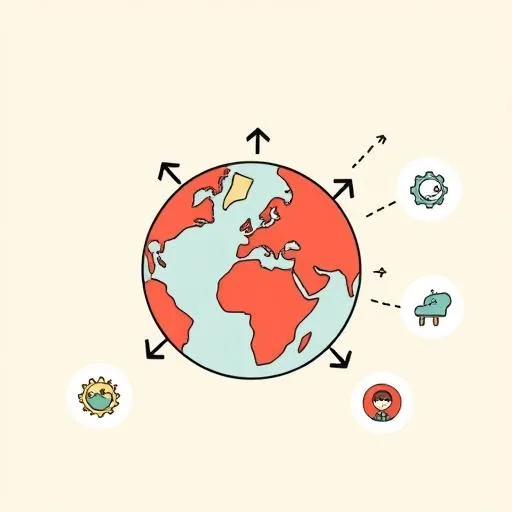
Have you ever felt like you’re trying to build a sandcastle with a fire hose? That’s sometimes what navigating the internet with our kids feels like—an overwhelming blast of information when all you want is to create something safe, fun, and maybe a little bit magical. So when I heard about Google’s new “Preferred Sources” feature, my ears perked up. It’s a tool that lets you hand-pick your favorite websites to show up more prominently in your search results. It sounds fantastic, right? Giving us more control is usually a win! But as I read more, a bigger thought started bubbling up, one that goes way beyond my own search habits and straight to the heart of how we’re raising our little explorers.
Is Preferred Sources the Right Tool in the Wrong Toolbox?

First off, let’s get this straight: giving users the reins is an absolutely brilliant move. We all want a bit more say in the digital noise that surrounds us. Google’s idea with Preferred Sources is to let you essentially create your own VIP list for news in your search results. You tell Google, “Hey, I trust these folks,” and voilà, their content gets a little gold star. It’s like having a personal librarian who knows you love stories about space exploration and always puts those books at the front of the shelf. Simple, effective, and empowering. YES!
But here’s the twist that the brilliant minds at places like Android Authority pointed out: most of us don’t use Google Search as our primary newspaper. It’s our ‘find-anything-and-everything’ machine. It’s for settling dinner table debates about whether a narwhal is a whale (it’s!) or finding a last-minute recipe. The real places where we consume a steady stream of content—our digital front porches—are Google News and Discover. These are the feeds that passively shape our worldview, the ones we scroll through while waiting for the kettle to boil. The argument is that putting Preferred Sources there would make a huge difference. It would be like finally getting that amazing new filter for the camera you use every day, instead of for the one collecting dust in the closet.
How Do Recommendations Shape Our Kids’ Worldview?

This whole conversation gets incredibly important when we think about our kids. The way they encounter the world is fundamentally different from how we did. The internet isn’t a place they visit; it’s a layer of the world they live in. Research from the Reuters Institute highlights that for anyone under 35, search engines and social media are the main gateways to news. They aren’t typing in a specific news website; they’re relying on algorithms to serve them what’s relevant. It’s a world built on recommendations.
And here’s the kicker: it works! Studies have shown a massive preference for reading recommended news. It feels tailored, relevant, and easy. So, a feature like Preferred Sources isn’t just a minor tweak; it’s a powerful dial that controls the informational ingredients our kids consume. When we curate their feeds, we’re not just picking sources; we’re shaping their understanding of what’s important, what’s true, and what’s possible. It’s a massive responsibility, but it’s amazing, what an incredible opportunity to guide them with intention!
What Are the Two Sides of Personalized News for Kids?

On one hand, this is the parenting dream! We can build a safer, more reliable information space. We can prioritize sources that are educational, kind, and fact-based. We can filter out the clickbait and the nonsense, creating a calmer digital neighborhood. It’s like being able to choose the friendly, wise, and encouraging neighbors for your child to grow up around. That feeling of providing a safe harbor in a chaotic sea? It’s priceless.
But then there’s the other side. The big, scary monster in the closet: the echo chamber. If our kids only ever hear from the sources we’ve pre-approved, how do they learn to wrestle with different ideas? How do they develop the critical thinking muscles needed to distinguish a strong argument from a weak one? The world is a beautiful, complicated, and wonderfully diverse symphony of voices. Handing them a playlist with only one genre feels like we’d be robbing them of the full experience. We want to raise kids who can not only listen to the whole orchestra but can also appreciate the unique sound of every single instrument.
How Can We Turn Curators into Curious Co-Explorers?
So, how do we balance this? We embrace it! We see this not as a problem to be solved, but as a fantastic new adventure to embark on with our kids. This isn’t about setting and forgetting; it’s about engaging and exploring. That warm, clear evening air we’ve been having feels perfect for a walk, and these chats are the kind that fit right in, don’t they?
What if we used a tool like Preferred Sources as a launchpad for curiosity? Instead of just picking our old standbys, we could sit down together and make a family ‘Exploration List.’ We could add a cool science site, a kids’ news outlet from another country, or a blog dedicated to art. We could turn curation into an act of discovery, actively building a feed that is both safe and surprising.
And what about making it a game? Let’s call it “Bubble Bursting!” Once a week, we could intentionally look up a topic without our preferred filters. We could find two articles from wildly different sources and talk about them. No judgment, just pure curiosity. “Why do you think they told the story this way? What words did they choose? What did they leave out?” These are the conversations that build resilient, thoughtful, and empathetic humans. It’s not about giving them the answers; it’s about giving them the tools to find their own.
Why Is Conversation the Real Algorithm for Parenting?

At the end of the day, no technology will ever replace the magic of a conversation. These tools—search engines, recommendation algorithms, preferred sources—are just that: tools. They can be incredibly helpful, but they don’t have a heart. They don’t have wisdom. That’s our job. That’s the beautiful, messy, and exhilarating work of being a parent.
Whether Google puts Preferred Sources in Search, News, or Discover, the power isn’t in the feature itself. It’s in how we use it to spark dialogue, encourage questions, and nurture a deep and abiding curiosity about the world. It’s about teaching our kids to be pilots, not just passengers, on their journey through the digital world. And honestly? I can’t think of a more exciting trip to be on with them. Let’s get exploring!
Source: Forget Search, these 2 Google services desperately need Preferred Sources instead, Android Authority, 2025/09/07 09:00:56
